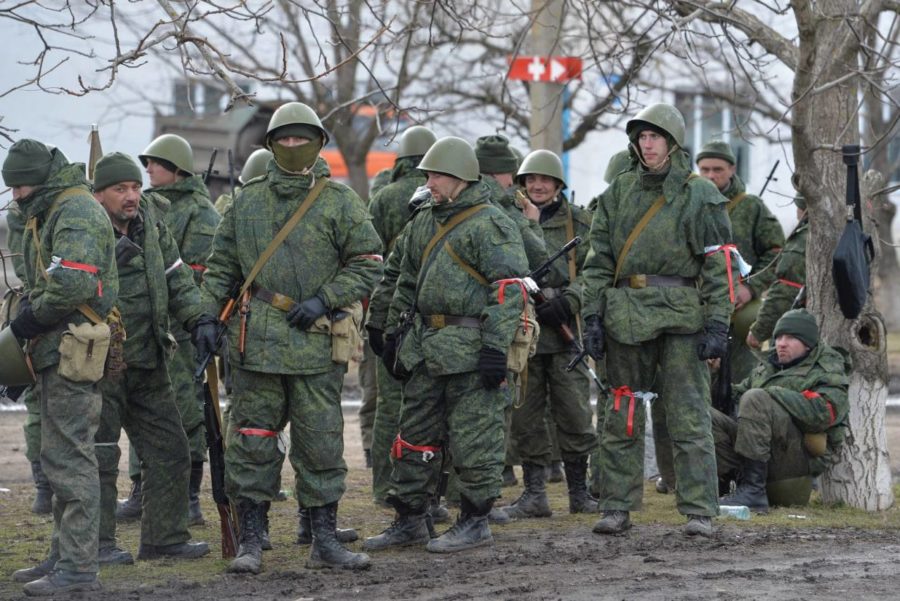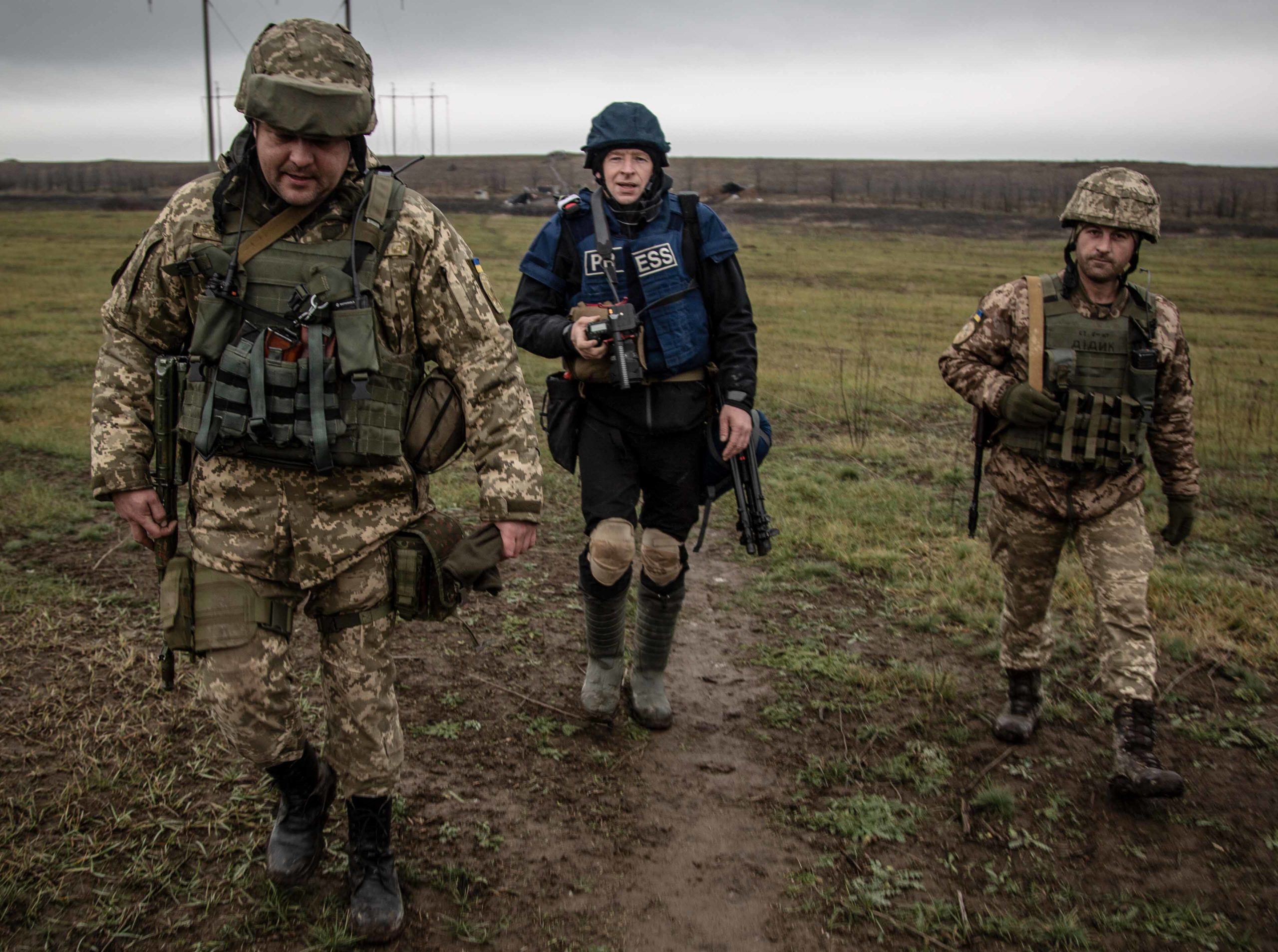The Russian occupation authorities of Luhansk and Donetsk ordered a "general mobilization" on 19 February, when Russia was unsuccessfully trying to create pretexts for its upcoming full-scale invasion of Ukraine. All local men aged 18 to 55 were subject to conscription.
Less than two weeks later, the age threshold would be raised to 65 and abducting men from the streets, their homes, and working places would became the new normal in occupied Donbas.
An anonymous pro-Ukrainian resident of Russian-occupied Makiivka who used to report on Twitter under the moniker Iosif Pinochet believed that the occupation authorities wouldn’t fling the forcibly conscripted locals into battle. He believed that the Russian regular forces would step in again against the Ukrainian army as they did it before in 2014 and 2015. Now, Iosif Pinochet himself hasn't posted anything since 6 April and his fate is unknown.
Eight years of living in the bubble of Russian propaganda under a harsh crackdown on any pro-Ukrainian views made many residents anti-Ukrainian. However, even given the fact that a significant number of locals took part in hostilities against Ukraine as members of the Russian-run "army of Novorossia," most Donbas locals still remained peaceful civilians unwilling to fight.
That's why the announced general mobilization was perceived en masse as another propaganda stunt to hide Russia's real intentions. However, it turned out that Russia had other plans regarding the local population all along.
There actually were some locals who came to draft offices as volunteers, others didn't volunteer but still came after receiving a draft notice.
But after it became clear that Russia uses those mobilized as cannon fodder without proper training and equipment, most of those who were lucky to be not caught in the first waves of the forced conscription preferred to go into hiding.
Pretty amazing footage of young conscripts from the Donetsk "People's Republic" complaining that they have been sent to Ukraine's Sumy region as cannon fodder pic.twitter.com/LkGJMbilTM
— Nikolaus von Twickel (@niktwick) March 28, 2022
Currently, many men in occupied Luhansk and Donetsk rarely go outside, trying to sit through the general mobilization process which doesn't show any sign of ending.
Крытый рынок, Донецк
"Добровольная мобилизация" продолжается pic.twitter.com/3pF3aVU9YI
— Василий (@x0PGNdEzYch4wn0) February 23, 2022
On February 28, four days into Russia's full-scale invasion of Ukraine, head of Donetsk occupation administration Denis Pushylin claimed that the mobilization was suspended since the required number of the mobilized was drafted, but in early March he said that the mobilization continued.
In mid-March, the occupation authorities of Donetsk and Luhansk raised the mobilization age margin to 65 years.

"They catch everyone. My relative with the 'white ticket' (acquittal from military service on medical grounds, - Ed.) was taken away." (Donetsk, 3 March)
How to dodge forced mobilization in the occupied Donbas
The Russian authorities banned men from leaving the occupied territories so that any man aged 18 to 65 can be forcibly conscripted.
For example, in mid-April, Donetsk local social media groups discussed how philarmonic and opera musicians, circus and education
and social workers were forcibly conscripted as "volunteers" despite the fact that they didn't have anything to do with the military.
В оккупированном Луганске российские оккупанты ловят местных мужчин и насильно отправляют воевать против Украины pic.twitter.com/6YFvxyuU1f
— Яна (@RPlOWNLgyMbDmcF) April 11, 2022
Russian citizenship with registration in Russia is the guarantee that you won't be forcefully conscripted in occupied Luhansk and Donetsk if you try to leave to Russia or if a patrol catches you in the street.
According to Euromaidan Press sources in the occupied Donbas, people close to the occupation authorities, workers of critical infrastructure facilities, local propagandists, and some other groups received special "passes" working as acquittal or deferment from the draft. The "conscript-catching" patrols don't detain those having such a document.
Bribes can buy a deferment yet without any guarantees that you won't be mobilized anytime soon.
#Луганск, наши дни, отлов мобиков на мясо. И действительно, зачем луганским бабам местные мужики, когда кадыровцы есть? https://t.co/HJWeUKceyf #роа #мобилизация pic.twitter.com/U1ZQYrsMZf
— Necro Mancer (@666_mancer) April 10, 2022
The only working method to avoid the forced conscription for most Donetsk and Luhansk men is to hide, hoping not to be caught during a roundup or on denunciation.
Scale of the tragedy
Russia's mobilization in the occupied Donbas continues to this day. There is no exact data of how many men have been forcefully conscripted in the Russian-occupied Donbas. This figure has been at least in the order of thousands, but more likely of tens of thousands, according to Radio Liberty, judging by the number of PoWs and KIA from the Donbas, and by the wide geography of their deployment across Ukraine -- not only Luhansk and Donetsk, but Kharkiv, Kherson, Sumy oblasts.
On 15 April, Ukraine's Main Directorate of Intelligence (HUR) reported
that Russia's plan to "mobilize 26,000 'reservists'" in the occupied Donbas failed. However, HUR didn't mention how many men were actually conscripted at the moment.
The forced conscription of Donbas locals by Russia is going on amid the ongoing mobilization and according to estimations received by the author of this article in private talks with Donbas locals, the number of the forcefully drafted may reach at least up to 50-60 thousand in total, given the actual demographics in this one of the most aged regions of Ukraine.
The forced Donbas conscripts lack not only any military training but also protective gear: most of the photographs from the war zone show them having no other protective equipment but old Soviet-era helmets.

According to both Ukrainian and pro-Russian sources, the Donbas locals have been generally used for the so-called "intelligence by battle" -- a Soviet-era tactic of throwing the soldiers into battle without any intelligence in order to find out where the defenses may be weaker.
Another common Russian practice of usage of the forcefully conscripted is committing them to attack fortified Ukrainian positions over and over in order to exhaust the defenders so that the regular Russian troops could later face less resistance trying to storm the positions.

On the other hand, the forcibly mobilized participate in Russia's ongoing genocide of Ukrainians not only with their own deaths, but also contributing to the destruction of Ukrainian settlements and killing their fellow Ukrainians.
The Russian authorities don't disclose the numbers of fatalities among the Donbas residents and there are no official Ukrainian estimations of their fatality rate. However, local social media groups have been full of reports on mass deaths among those Donbasians mobilized in the course of Russia's full-scale invasion of Ukraine:
- "Private message: 45 coffins with newly mobilized arrived in Sverdlovsk (Dovzhansk, occupied part of Luhansk oblast, - Ed)" (1 Mar 2022)
- "Last night, 6 trucks of [dead soldiers] were brought to Luhansk" (1 March 2022)
- "According to rumors, about a hundred coffins arrived in Anthratsit (Luhansk oblast, - Ed.)" (1 March 2022)
- "...back in March, a whole battalion of the orcs (Russian troops, - Ed.) quickly perished [in an attack on Popasna], including a large number of mobiks (the mobilized, - Ed.)" (19 April 2022)
On 11 April, Ukraine's General Staff reported that "In Alchevsk (Luhansk Oblast, - Ed.) more than 300 people among the mobilized locals lost their lives."
Russia's forced conscription in other occupied territories
The General Staff of the Ukrainian Armed Forces reported on Russian mobilization in the newly-occupied city of Izium, Kharkiv Oblast.
The Staff's later report suggest that Russia started mobilization in the territory of the occupied Kherson Oblast in Ukraine's south.
Further reading:
- ICJ examines Ukraine’s case regarding Russia’s false pretext of “genocide” to invade Ukraine
- The (busted) info-ops driving Russia’s false-flag pretexts for invading Ukraine
- 7,000 forced to attend “mobilization assembly” in occupied Donetsk Oblast (2017)





